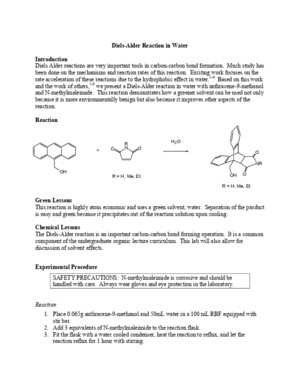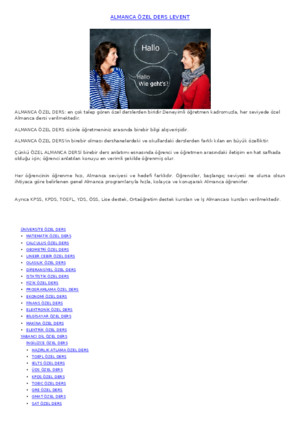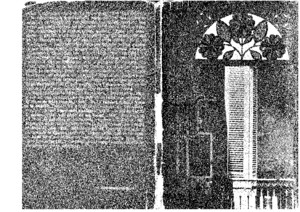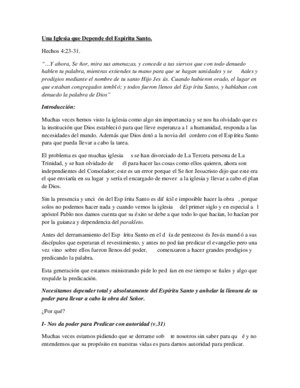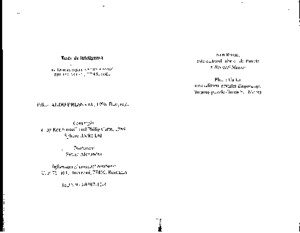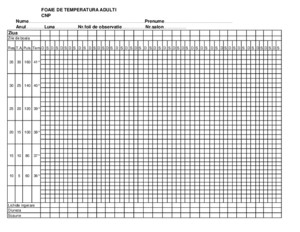Green Diels Alder experiment
There is document - Green Diels Alder experiment available here for reading and downloading. Use the download button below or simple online reader.
The file extension - PDF and ranks to the School Work category.
Tags
Related
Comments
Log in to leave a message!
Description
Download Green Diels Alder experiment
Transcripts
Diels-Alder Reaction in Water Introduction Diels Alder reactions are very important tools in carbon-carbon bond formation Much study has been done on the mechanisms and reaction rates of this reaction Exciting work focuses on the rate acceleration of these reactions due to the hydrophobic effect in water 1-4 Based on this work and the work of others, 5,6 we present a Diels-Alder reaction in water with anthracene-9-methanol and N-methylmaleimide This reaction demonstrates how a greener solvent can be used not only because it is more environmentally benign but also because it improves other aspects of the reaction Reaction Green Lessons This reaction is highly atom economic and uses a green solvent, water Separation of the product is easy and green because it precipitates out of the reaction solution upon cooling Chemical Lessons The Diels-Alder reaction is an important carbon-carbon bond forming operation It is a common component of the undergraduate organic lecture curriculum This lab will also allow for discussion of solvent effects Experimental Procedure SAFETY PRECAUTIONS: N-methylmaleimide is corrosive and should be handled with care Always wear gloves and eye protection in the laboratory Reaction 1 Place 0065g anthracene-9-methanol and 50mL water in a 100 mL RBF equipped with stir bar 2 Add 3 equivalents of N-methylmaleimide to the reaction flask 3 Fit the flask with a water cooled condenser, heat the reaction to reflux, and let the reaction reflux for 1 hour with stirring NROOOHRNOOH 2 OR = H, Me, EtR = H, Me, Et+OH 4 Monitor the reaction progress with TLC, developed in 1:1 ethyl acetate: hexanes Be sure to let the water evaporate before developing, as water will affect the separation 5 Once the hour has passed, remove the flask from the heat, and let cool to room temperature Chill the flask in ice and then collect the crystals, record melting point, and calculate percentage yield Details This laboratory should take students about 3 hours to complete Yields are typically around 80% The product is usually an off-white solid with a melting point of 237-239 ºC If further purification is desired the product can be decolorized with charcoal and recrystallized from ethanol and water The yields are significantly reduced in this case References (1) Rideout, D; Breslow, R J Am Chem Soc 1980 , 102 , 7816-7817 (2) Breslow, R; Rizzo, C J J Am Chem Soc 1991 , 113 , 4340-1 (3) Breslow, R; Zhu, Z J Am Chem Soc 1995 , 117 , 9923-4 (4) Breslow, R; Groves, K; Mayer, M U Pure and Applied Chemistry 1998 , 70 , 1933-1938 (5) Meyers, K E; Kumar, K J Am Chem Soc 2000 , 122 , 12025-12026 (6) Breslow, R; Maitra, U; Rideout, D Tetrahedron Lett 1983 , 24 , 1901-1904 Lauren M Huffman, Lallie C McKenzie, James E Hutchison February 2004
Recommended

